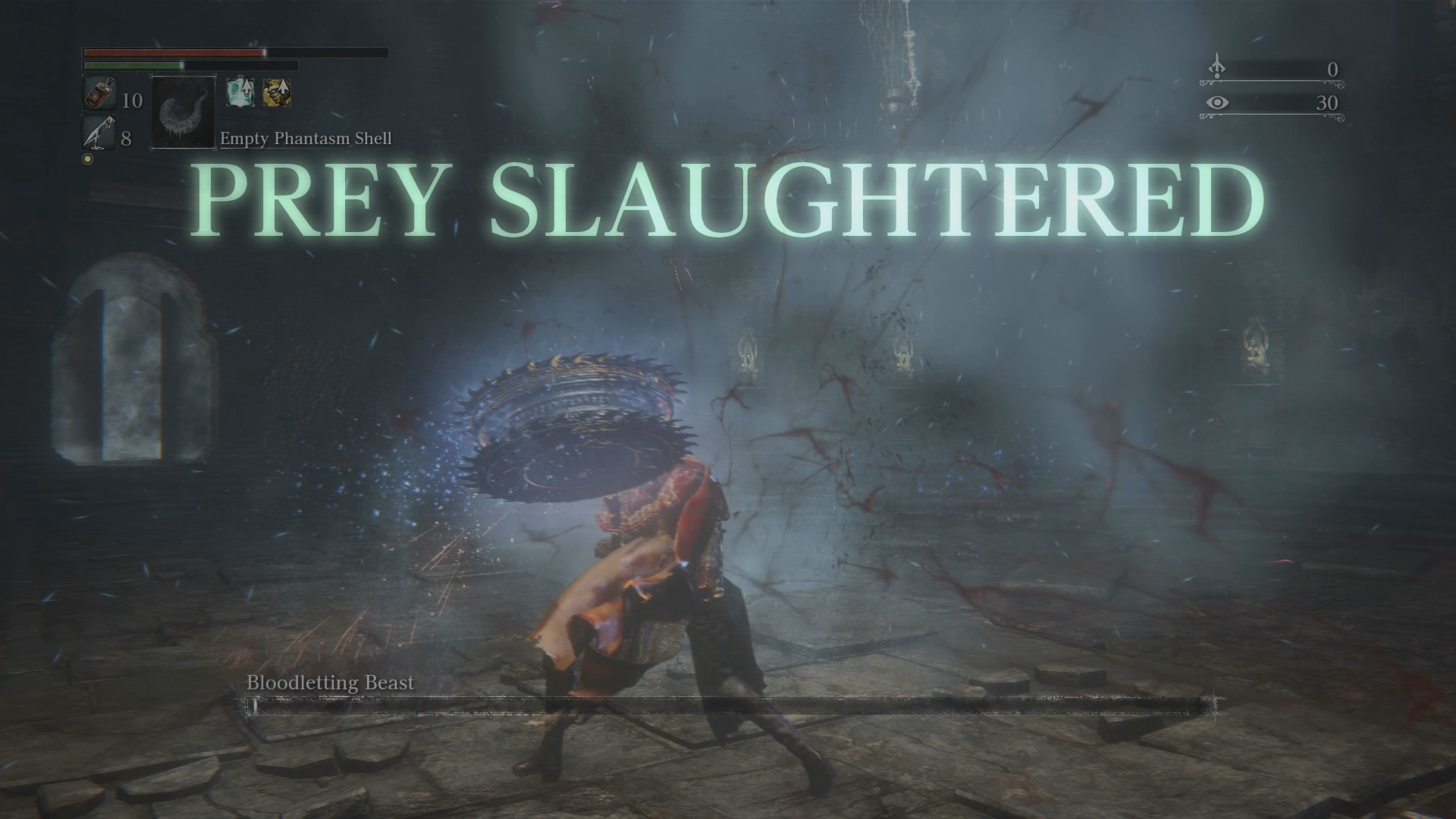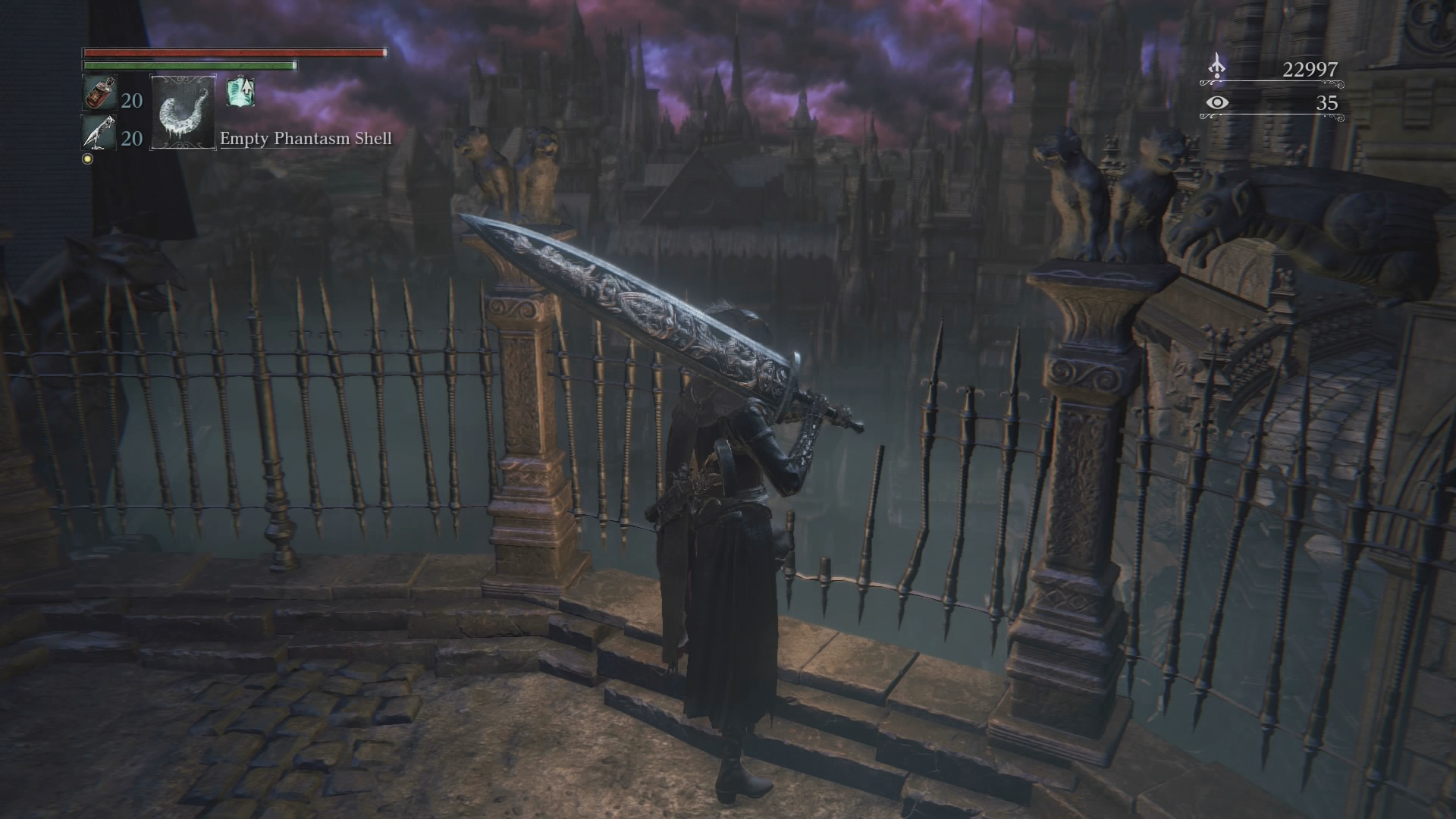I Take Back What I Said About Bloodborne
This October, I decided to jump back into Bloodborne. It called to me, and I could not resist its summons.
I remember being super hyped for the game when it first came out, but I did not have the time or the console with which to play it. As time passed, it got further built up in the zeitgeist. Friends and reputable people in the games industry only further expanded my expectations. I managed to avoid significant spoilers about the game’s content, the bosses, and the way the story would progress. Nonetheless, by the time I was finally able to play it, I was disappointed with how my first full experience went. I then cataloged it in my review of the game, listing out the various issues I had with it, despite wanting to love it.
Since I believe it’s worth revisiting things you may have or have not enjoyed in the past to see if your perspective might change with time, I revisited the beloved From Software video game for the horror season. I’ve come here to briefly say why I was wrong with my first impressions.
Image: Sony / From Software
How I’ve Changed My Mind
Combat Mechanics
I will take full responsibility for not enjoying the combat of Bloodborne the first time around. I was used to Dark Souls combat, which was more focused on dodging and patience. Bloodborne requires both dodging and patience, but it also encourages swift retribution. To be more specific, Bloodborne rewards you for being aggressive and rushing in or returning attacks after being hit. This ran counter to my playstyle for every game of this genre. When I actually finished Bloodborne, I was starting to catch on, but it still took me a while to get used to the combat rhythm. Even then, I still wasn’t really comfortable with it.
Image: Sony / From Software
You could point to years of playing Demon’s Souls and Dark Souls over and over. You could point to various other preferences of mine when it comes to combat rhythm. Bloodborne challenged me in ways I simply could not understand or accept at the time. The rhythm and pace of the fighting, as well as the way in which weaknesses were not as obviously disclosed, did not click with me, and I got extremely frustrated, quickly.
Perhaps the most frustrating aspect of Bloodborne was the concept of Visceral Attacks. We’ll get to some of those issues later, but when I first played it, I just could not figure it out. The fact that the game seemed to reward you so much for these dramatic attacks made me want to engage with the mechanic. However, I could not learn the timing for a lot of the enemies or understand which enemies even permitted the attack in the first place. When I grew tired of trying to learn it and being forced to farm for bullets, I practically gave up on it altogether and just used a big two-handed sword to handle encounters, negating the guns’ purpose entirely.
Image: Sony / From Software
This time around, I deliberately made a skill-based character for the purpose of learning the process of parrying people with guns. After only a few hours, I got used to the mechanics and suddenly understood the satisfying nature of the attacks. When you are down on resources, close to death, nothing is quite as satisfying as perfectly timing the counterattack, ripping the bloody soul out of a foe to secure your safety, and hearing that ominous scream of Bloodborne’s chime. In the past couple of weeks, I’ve become a thousand times better at parries than I was when I first reviewed the game. With the distance I’ve taken from the Dark Souls games, I was able to adapt to the Bloodborne rhythm, and it’s helped with my playstyle immensely.
The last thing I’ll mention is that even though I liked all the weapon designs of Bloodborne, I didn’t engage with many of them the first time around. Part of this was because the combat mechanics just didn’t go with the playstyle I was trying to force upon my experience. For instance, many of the weapons didn’t seem to stagger the enemies enough. As I mentioned, I chose the big sword that everyone uses at some point and just stuck with the two-handed stance for most of the game because I could do enough damage to most enemies before they got a chance to hit me.
Image: Sony / From Software
Having come back to the game and forcing myself to try different combat styles with various weapons, I’ve engaged with more of the weapons’ abilities. For example, I never really utilized the “transform attacks” last time, which are a crucial part of the combat for most of the weapons. The big sword I used before had extremely slow and impractical transform attacks, and I never wanted to use the other form of it anyway, so I missed out on a significant portion of the combat. It doesn’t seem like a big deal, but this single attack mechanic greatly affects the formula of combat and its flow. They do significantly more damage, and the rate and angle at which they’re performed are often a bit slower, which forces you to consider the right moment to use them in the middle of a fight. The simple idea of a transform attack adds an extra layer to the combat strategy that is sorely lacking in the early Dark Souls games. Now that I grasp Bloodborne’s madness, I actually find it difficult to go back to that big sword to which I clung so desperately before.
Chalice Dungeons
I still stand by a fair amount of my criticisms towards the Chalice Dungeons, but I wanted to briefly take back one that I had launched at Bloodborne in my review. I had complained about their boring, repetitive nature and had argued that if they were procedurally generated, that would have justified their design a bit more. What do I mean by that? For those who don’t know, procedural generation, in video game terms, is when you take a bunch of interchangeable parts and let the application’s algorithm rearrange and assemble the pieces to create a unique experience for the player every time. Examples of this include No Man’s Sky, Spore, Spelunky, Rogue Legacy, etc.
Image: Sony / From Software
There are numerous rooms in the chalice dungeons that have the exact same design. Many of the layouts are repeatable and loaded with dead ends, which is actually a very uncommon occurrence in the main game. I thought that it would only have made sense to design them this way with the intention of letting the game generate a unique dungeon every time. That isn’t the case, which certainly irritated me when I tried to engage with them in the past.
However, I have since learned that there are specific types of chalices that are designed to do just that. It’s not 100% unique, but it’s still a bit more justified than I thought.
Where I Still Have Issues
Visceral Attacks
While I have learned the combat format and adapted appropriately, I still think that the core mechanics of the game should not be as inconsistent as it is. The area in which you can initiate the VA is too small for some enemies, resulting in numerous missed opportunities. It is also extremely inconsistent on sloped surfaces. I had hoped I was wrong about it before, but I still see a VA whiff much of the time when attempting it on anything more than a 30% incline.
Image: Sony / From Software
Chalice Dungeons
Despite my coming to terms with their design philosophy, I still think these things are pretty boring. There are some cool bosses and enemies to encounter in there, along with some unique items and gear to find. Yet, you have to grind through so many floors of the same sort of environment to reap many rewards. Not to mention, there are plenty of bosses that are repeated or completely uninspired to act as little more than roadblocks. The chalice dungeons were obviously meant for co-op play, but these still could have been better for single-player, or, at the very least, they could have been shorter.
Image: Sony / From Software
Ability Scaling & Loot
The way to build out your character in the Souls games has always been a little obtuse, often requiring a restart to better build out your character once you have an understanding of what every stat means. Considering the fact that there are so few weapons (in comparison to other Souls games), I find it annoying that there are so few that seem to be specifically tuned for certain stats, and overwhelmingly so in other stats.
One of the strengths of the Dark Souls games is the variety of choices in how the player can spec out their character: one-handed, two-handed, dual-wielding, ranged, up-close, whatever. You have options in those games, and you get access to countless weapons in a short amount of time for you to try out the different combat styles that you’d prefer. Bloodborne gives you far fewer choices for a long time and really skews in one direction. The total number of primary weapons that scale to the strength skill dwarfs all other weapons, even with the DLC. While I appreciate the different items you can find in your adventure a lot more than before, I still think the loot loop of this game is weak, especially in the Chalice Dungeons.
Image: Sony / From Software
The Verdict
As I said in my review, there is no other Souls-style game that I wanted to like more than Bloodborne. Now that I finally get it, I do like it, a lot. It may never quite overtake my original experiences with the first Dark Souls or the original Demon’s Souls, as those were unique to their time. However, Bloodborne has the style and the story that I like more than any other. Now that I can finally enjoy the combat, I’m not sure I’ll be able to put it down for long.


















